Throughout history there have been men who have assumed the responsibility of leading their peoples in the fight for freedom and here we have seen some, such as Eunoo, Skanderberg, Andreas Hofer, Tiradentes or Louis Delgrés, for example. Well, Bulgaria also had its own:it was called Ivailo and in the 13th century it led what is considered the first great peasant rebellion in Europe, which would have tried to subvert the social order. He was proclaimed emperor until his overthrow by an alliance between the nobility and the Byzantines that forced him into exile.
Ivailo did not have blue blood. He was a simple farmer who, according to some sources, lacked his own land and dedicated himself to raising pigs, while others do consider him to be a proprietor.
In any case, it seems that he had providential visions in which he put himself at the head of a popular movement, something that constituted a whole tradition in the Middle Ages and it is not necessary to remember the case of Joan of Arc. The political, social and economic context provided the necessary element for those dreams to end up materializing.
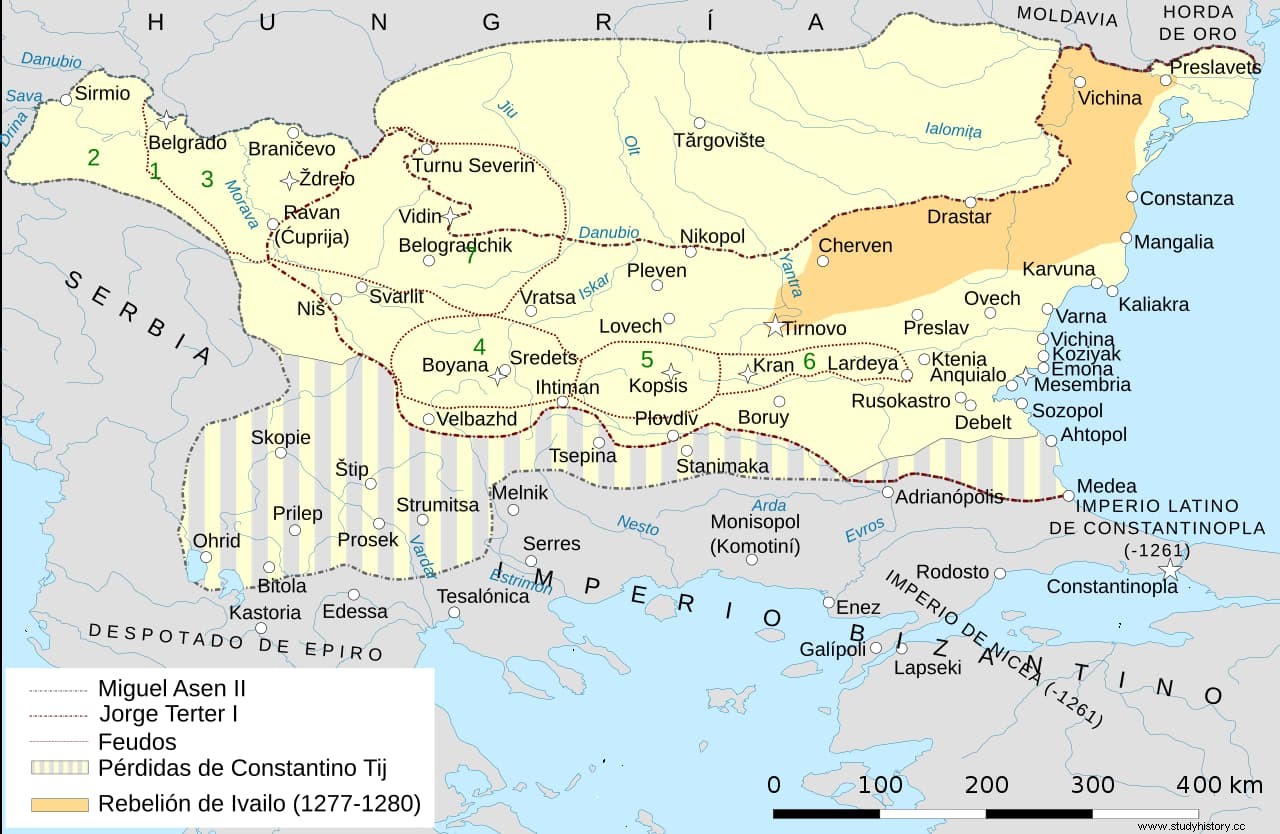
First of all, the Bulgarian Empire had been in a period of decline since the death of Ivan Asen II in 1241. His successors were a series of child tsars unable to wield real power, thus several territories were lost:the Empire of Nicaea (a Byzantine state founded by Theodore Lascaris in 1294, when the Crusaders took over Constantinople) kept Macedonia and part of Thrace; the Kingdom of Hungary, with Belgrade and the Banato de Severin. But there was an even worse threat:the Golden Horde, the Mongol state heir to the Empire of Genghis Khan, broken up by his death.
Mongol raids became more frequent, forcing the seven-year-old Tsar Kaliman Asen I to pay Genghis's grandson Batu Khan an annual tribute in exchange for peace of mind. But there was no such because the country was plunged into a continuous civil war for the throne. Kalimán Asen I died in 1246, perhaps due to natural causes or perhaps poisoned, being succeeded by an eight-year-old half-brother named Miguel Asen II, who reigned for a decade. After this, he was assassinated by Kalimán Asen II, who married his widow to legitimize himself but was killed months later and took the witness Mitso Asen, married to a daughter of Iván Asen II. He lasted a year; the one that took the nobility to proclaim Constantine Tij.
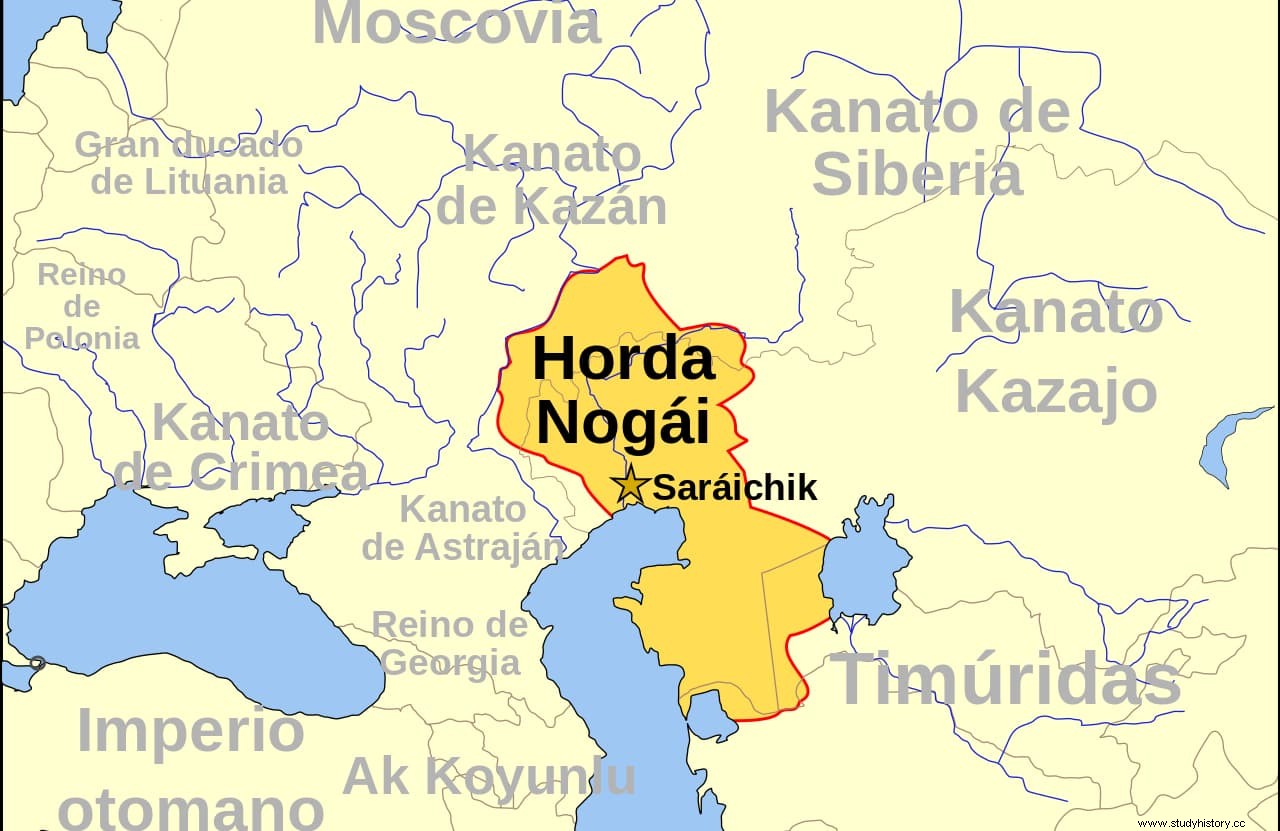
Constantine was a boyar born in Skopje who assumed the surname Asen to reinforce his legitimacy and thus was the first to manage to stay on the throne. He did so until his death in 1277 but that did not mean peace for Bulgaria, as he launched a war against Hungary to recover the Banat and against the Byzantine Empire when Michael VIII Palaiologos, who had recovered Constantinople and initiated an aggressive foreign policy, deposed to the emperor of Nicaea.
In this second conflict, he made an alliance with the Mongols, but since there were no practical results, he ended up negotiating his marriage to María Palaiologos Cantacucena, Miguel's niece, which not only put an end to the conflict but also served to make him forget his previous wife. Irene Ducaina Láscarina, daughter of the emperor of Nicaea, a true intriguer who also had not given him offspring.
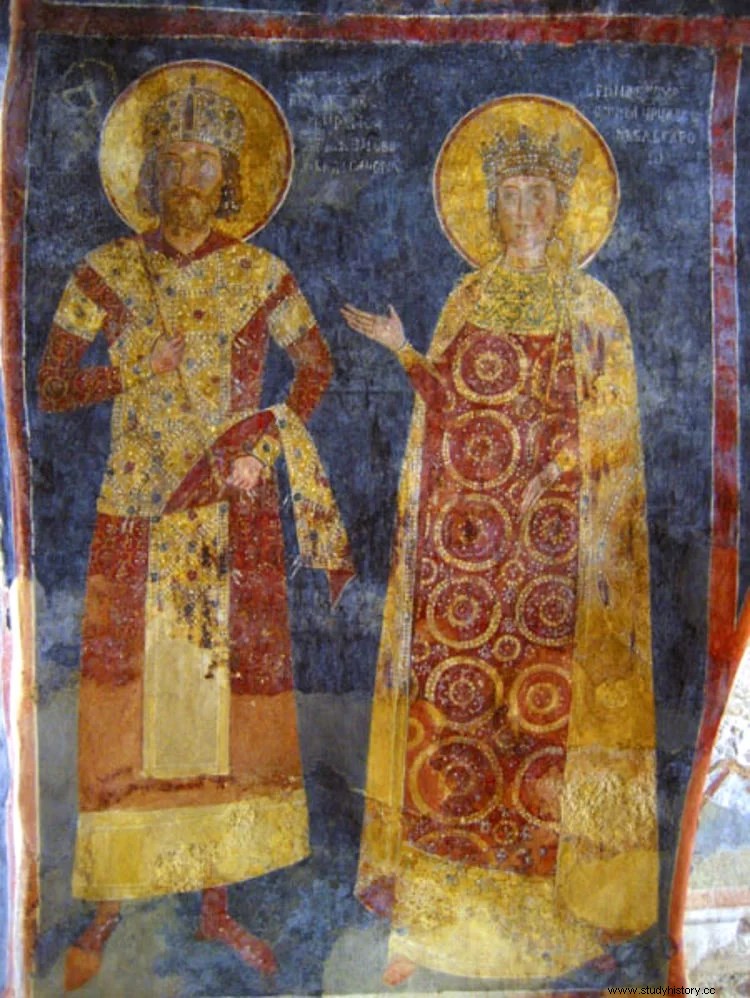
Except that Maria turned out to be just as gifted at intrigue, aggravated somewhat by the fact that Constantine had been paralyzed in a hunting accident and this inevitably left him unable to deal fully with the affairs of state, in which his wife he did and undid as he pleased with a view to ensuring his son's succession, much to the chagrin of the nobility. But the nobles had their main interest in the countryside, where feudalism had been spreading, subjecting its people to the duties characteristic of that system and increasing the seigneurial power to the point of being governed almost as semi-independent states, weakening the central power.
And then the Mongols reappeared, not resigned to getting nothing out of their adventure against the Byzantines. Now led by the chieftain Nogai Khan, stronger than the legitimate ruler Mengu-Timur, they resumed their raids, looting the fields without the state showing any ability to protect them. This resulted in serious economic but also social damage, since the peasants had been converted into serfs, reducing their freedoms at the hands of the privileged classes (government, nobility and clergy), without receiving the protection expected of them in return. in return. All that was missing was the spark that would transform the discontent of the countryside into revolt and that spark was called Ivailo.
He was a farmer, probably a native of Provadia (a northwestern city), whom the Byzantine chroniclers contemptuously nicknamed Bardokva (Lettuce) or Lakhanas (Vegetable). In fact, calling him a swineherd, as we said before, is also part of that image; it is something frequent in historiography and in Spain itself there is a clear example when Francisco López de Gómara, official biographer of Hernán Cortés, calls Francisco Pizarro at a time when the wonders of Cuzco overshadowed what was achieved by the conqueror of Mexico . The truth is that in those days, pig farming was a source of wealth and owning a good herd of pigs could turn someone into a local personality.
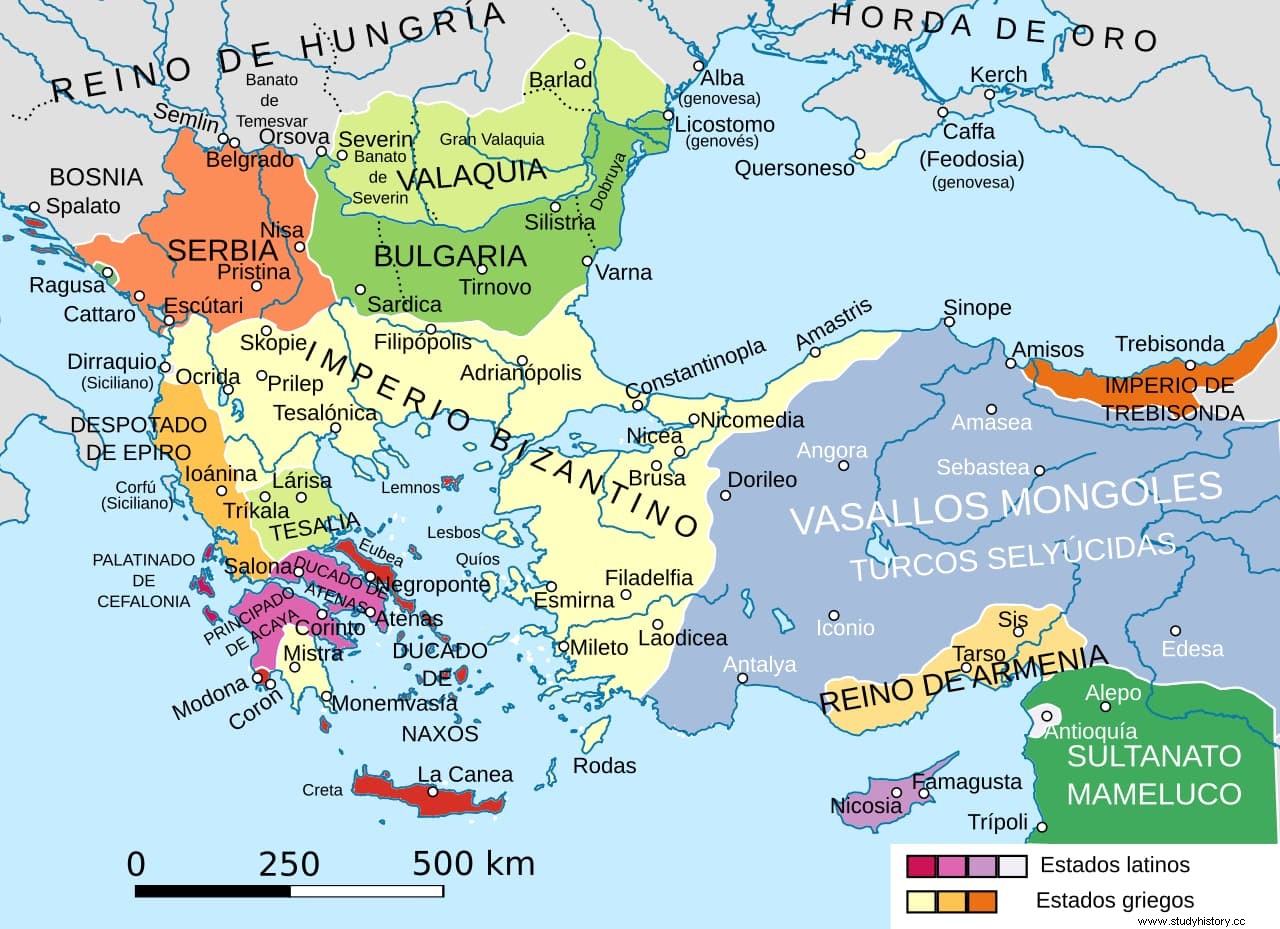
It is not known if this was the case with Ivailo, but it is known that he experienced mystical visions that earned him massive support among all those from the areas devastated by the Mongols, who no longer had anything to lose because they had been ruined. Furthermore, he achieved them in a very short time, to the point that the first army he formed in the summer of 1277 marched against the bands of Asians who were still moving around the region. The fact that they each went to his side and expected no resistance led to Ivailo claiming his first surprising victories, managing to drive the Mongols out of the borders by autumn.
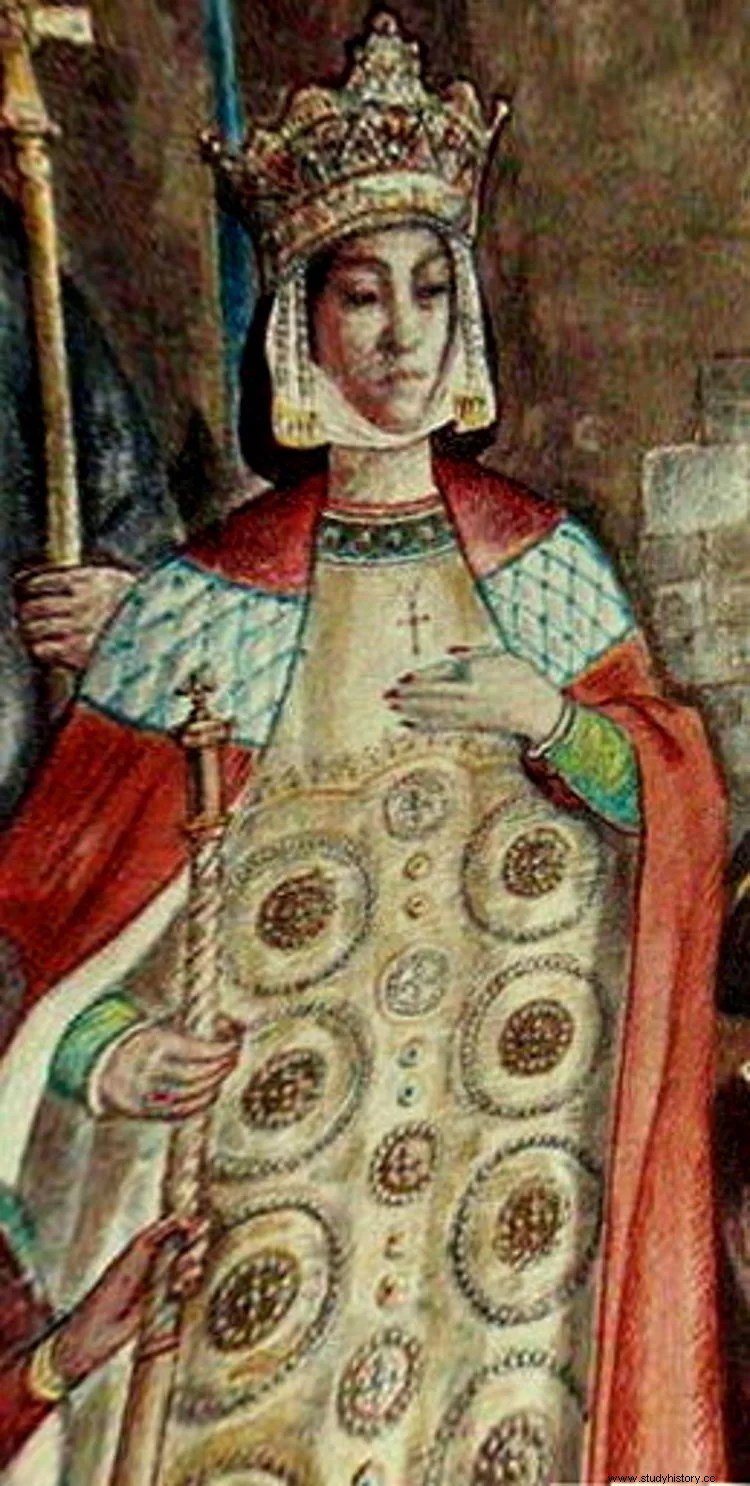
Ivailo was not alone nor did he have an innate tactical genius; he had the help of Hranislav, a veteran military man who joined him early on and whose experience must have been important. Those triumphs made everyone see that the prophecies were fulfilled and they proclaimed the visionary emperor of the people, having an extensive territory under his control. This frightened Constantine who personally led an expedition to reduce it, leaving his wife the reins of government in the capital, Tarnovo. The column fell into an ambush and the emperor, who was traveling in a carriage due to his disability, was killed by Ivailo, who incorporated a good part of his men into his ranks. From then on, all the Bulgarian cities fell into power one after another and only Tarnovo remained, where Maria gave the crown to her son Miguel de Ella.
Bulgaria once again had two emperors and since there are not two without three, Michael VIII Palaiologos provided the third. Considering that Maria and her son -who was seven years old- would not be able to put an end to that threat to the social order, he married his daughter Irene to a Bulgarian nobleman (the son of that tsar named Mitso who only lasted one year), whom appointed despot and he presented as legitimate heir to the throne with the name of Iván Asen III. Faced with the imminent arrival of Byzantine troops to make it a reality, Maria's reaction was to contact Ivailo and offer him her hand to reign together in exchange for stopping the enemy and accepting little Miguel as his successor.
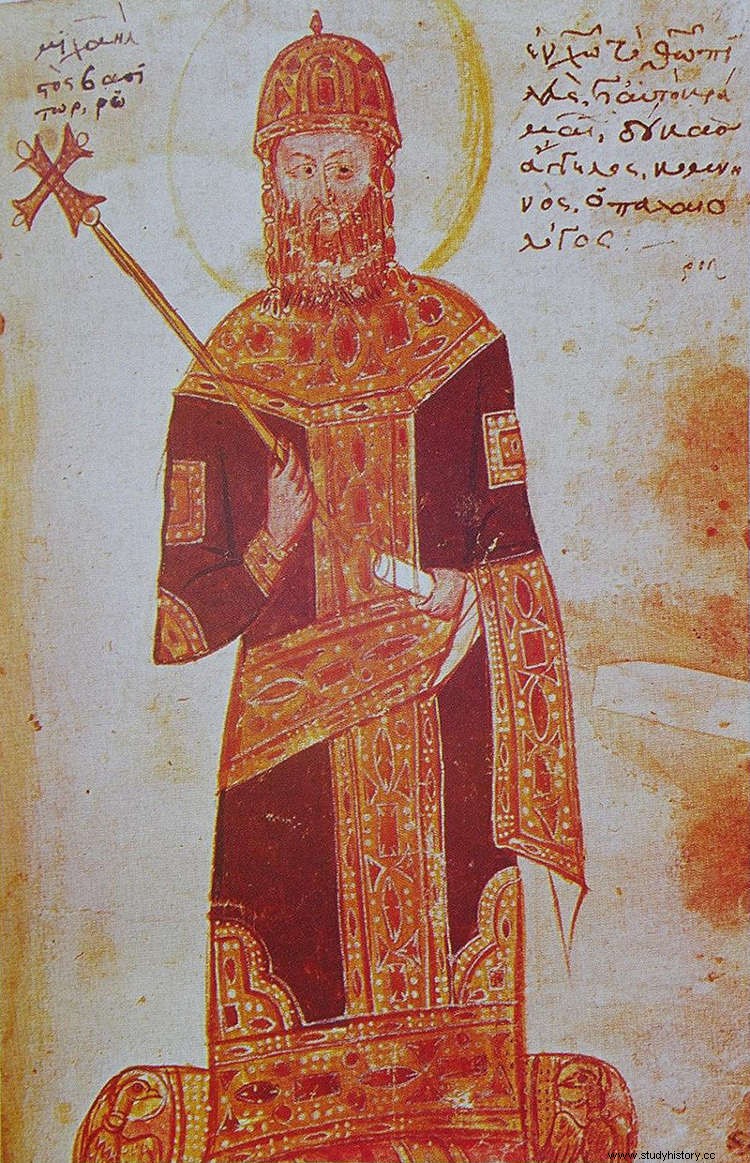
In the first instance, Ivailo rejected the offer for two reasons:first, because what the tsarina was giving him, he was about to get for himself; and second, because it would be a betrayal of the principles that had guided him there. However, in the end, pragmatism prevailed:accepting would put an end to the civil war and, given that the Byzantines would have to be faced sooner or later, better to do it with allies. This is how, in the summer of 1278, that modest peasant became Tsar of Bulgaria, repelling, as he had promised, the various invasion attempts sent by Michael VIII Palaiologos. Then, taking advantage of the troubled river, the Mongols returned.
This time it was not a simple predatory raid. Nogai Khan arrived with the best of his army and Ivailo, who met him, was defeated, having to entrench himself in the fortress of Drastar, where he had to endure three months of siege. The power vacuum was taken advantage of by the boyars, who had never agreed to submit to that intruder and called Ivan Asen III. Maria was overthrown and banished to Constantinople; Her future went with her, because she was pregnant with Ivailo. When the latter managed to break the siege of Drastar and in turn lay siege to Tarnovo, the Byzantine emperor sent the protovestiarios to the aid of the capital. Murin at the head of ten thousand men (the protovestiary s was third in the hierarchy, behind the emperor and the parakoikomenos or prime minister).
It was the month of July 1279 when that force collided with the Bulgarian force, commanded personally by Ivailo, twice:first at the Kotel pass and then, in retreat, at the fortress of Devina. Ivailo won a landslide victory and also ordered all the prisoners to be executed. But the most impressive thing was that the following month another Byzantine army arrived, led this time by the protovestiarios Aprin, which ended exactly the same as the previous one. Iván Asen III had to escape from Tarnovo and in 1280 the boyars proclaimed one of their own to replace him, all seconding him as one seeing the danger that was upon them.
It was Jorge I Terter, who would manage to stay a decade thanks to the fact that Ivailo, paradoxically, weakened:his followers had thought that the victory was definitive but the appointment of the new tsar led them to continue in a continuous state of war from which they were tired. So they left, so that for the foreseeable confrontation against the allied troops of the crown and the nobility, their leader already only had a handful of unconditional supporters and among them was not his right-hand man, Hranislav, captured by the Byzantines. After a year of captivity, they would grant him freedom in exchange for working for them; having accepted, he would become general in chief of the imperial guard, being sent to swell the famous Catalan Company of Roger de Flor (with whom he did not get along, by the way).
The faithful to Ivailo were clearly insufficient, so he had the audacious idea of going to the Mongols, appearing in person before Nogai Khan to propose an alliance. He was about to accept his offer but in the end he preferred the payment that Iván Asen III offered for his death, quickly sent there by Miguel VIII upon learning of his move. According to tradition, the two were dining with Nogai when he pointed to Ivailo saying: "He is an enemy of my father, the emperor, and he does not deserve to live." And then he was killed.
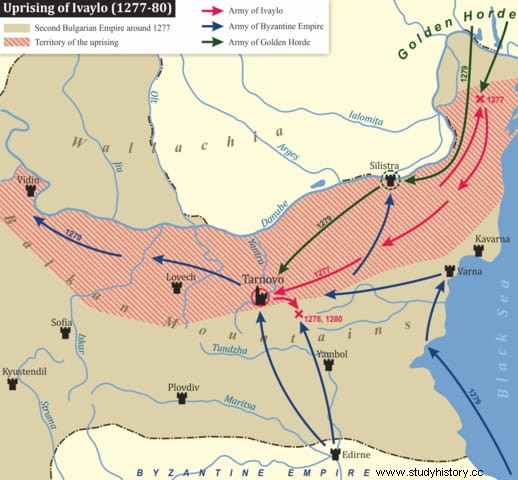
Thus ended the extraordinary adventure of that peasant to whom the Bulgarian communists of the 20th century attributed the intention of carrying out a dubious social revolution without circumstances allowing him time to do so. The influence that he left behind was important and, given his confused ending, it did not take long for characters to emerge who claimed his identity, as he had spent centuries before with the pseudo-nerones, the impostors who pretended to be Nero after the death of him. One would offer himself in 1284 to Andronicus II to fight against the Turks but would be unmasked by Maria Cantacucena and imprisoned, although he was about to achieve his goal due to the popular enthusiasm he aroused. The other impostor did obtain command of an army, which was offered to him to get him out of the way, and with it he fell at war.
Trusting Nogai Khan was a temerity of Ivailo because he was married to Eufrosina Palaiologos, natural daughter of Michael VIII Palaiologos, who would also later help suppress a revolt in Constantinople (and his successor, Andronikos II, to fight Serbia). In fact, Bulgaria came under the Mongol orbit and George I Terter was forced in 1292 to abdicate in favor of Chaka, the son of Nogai, although he only lasted a year because his father's ambition was judged dangerous by the Great Khan Tokhta, who ordered to execute him.
However, Ivan Asen III never regained the throne, spending the rest of his life in Asia Minor, despised by the Byzantines because of his flight from Tarnovo. It was Theodore Svetoslav, son of George I, who inherited it and finally got the country to begin to be reborn, recovering lost territories, breaking away from Asian influence and establishing a period of peace and prosperity.
